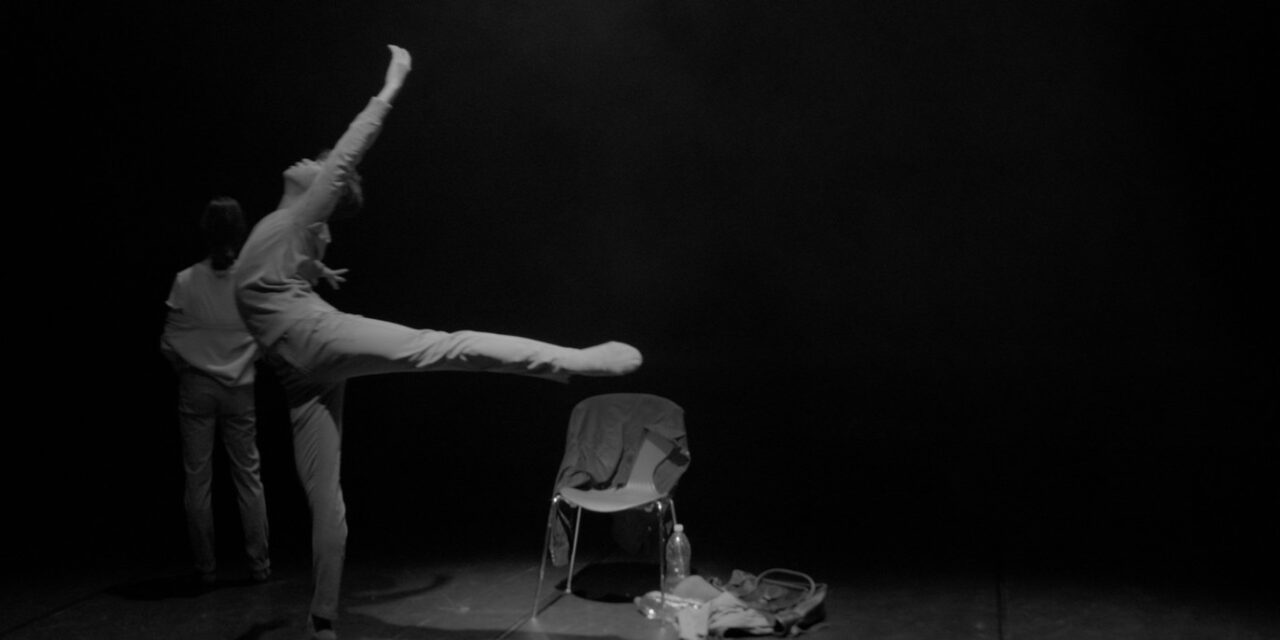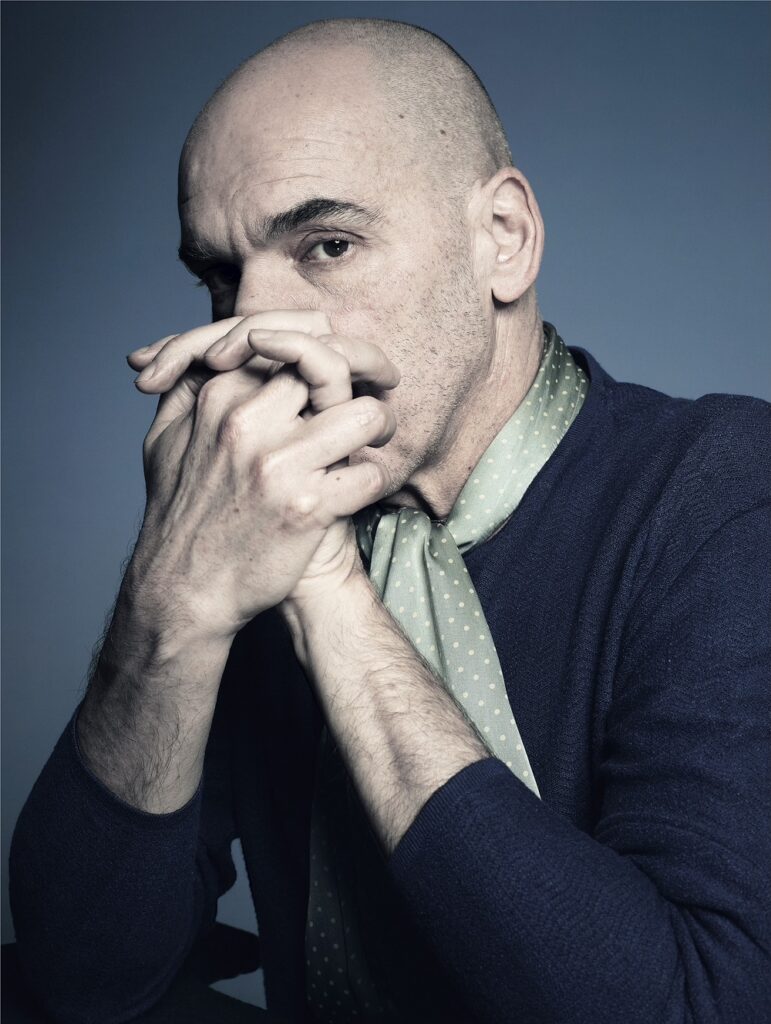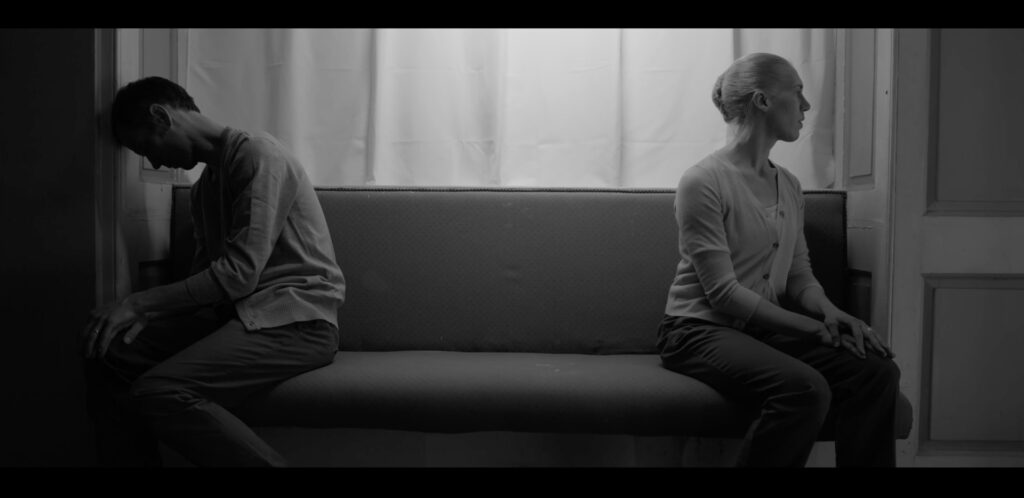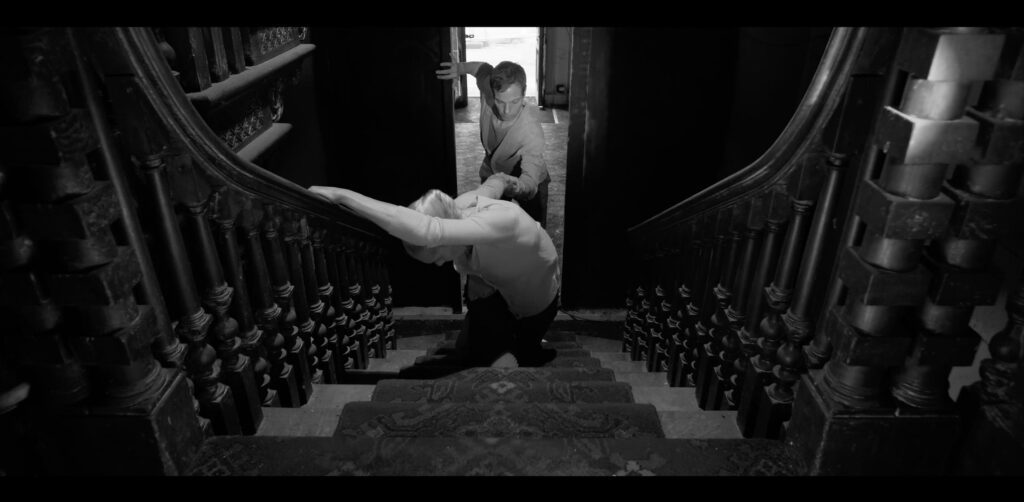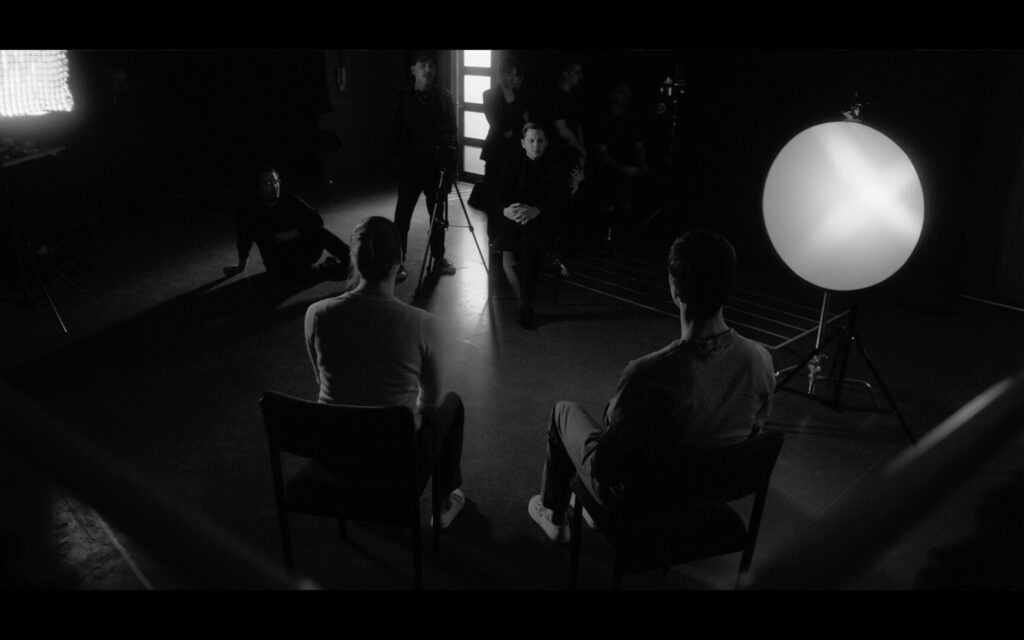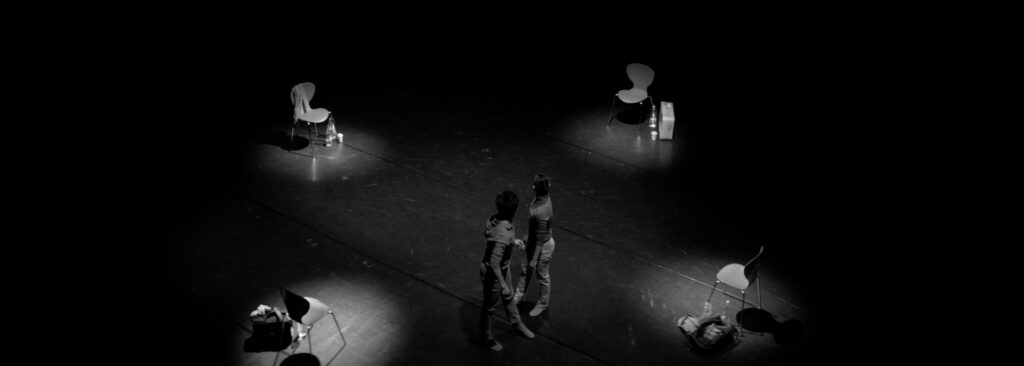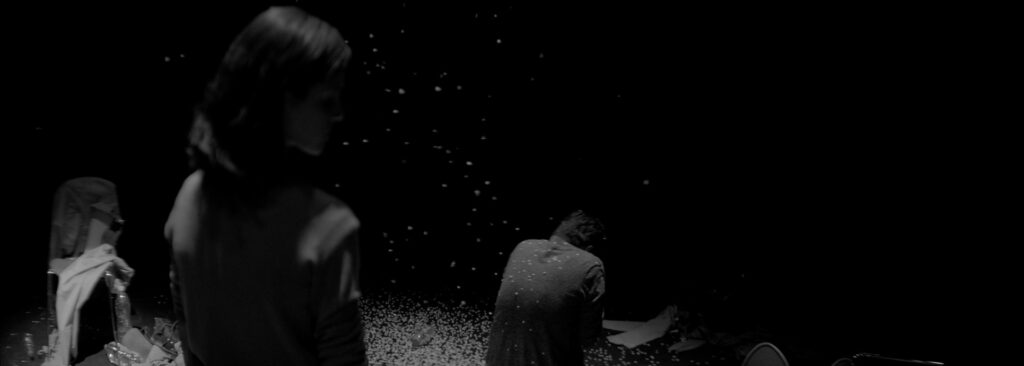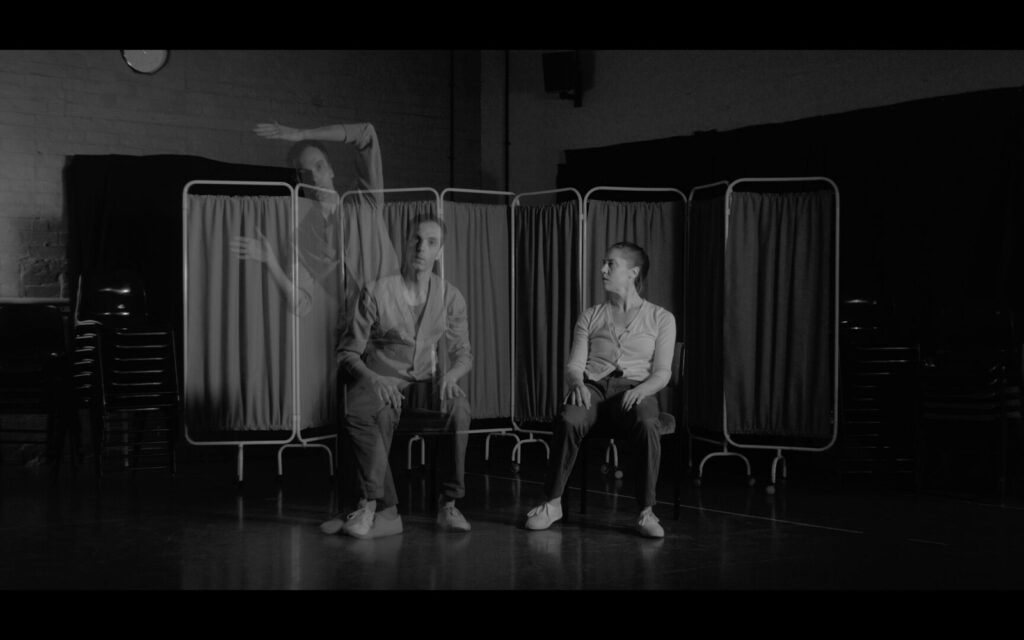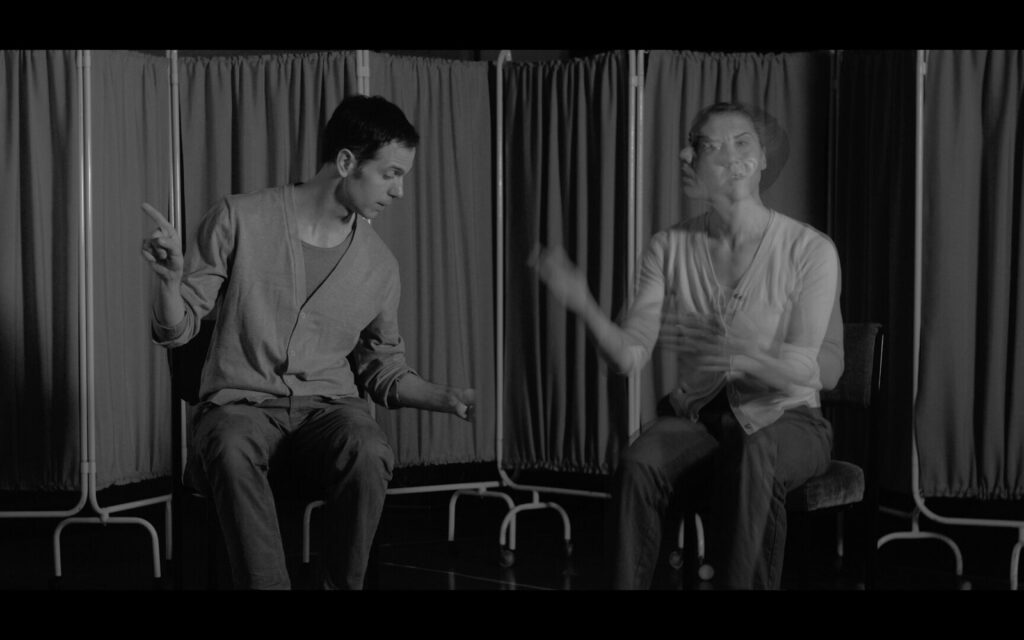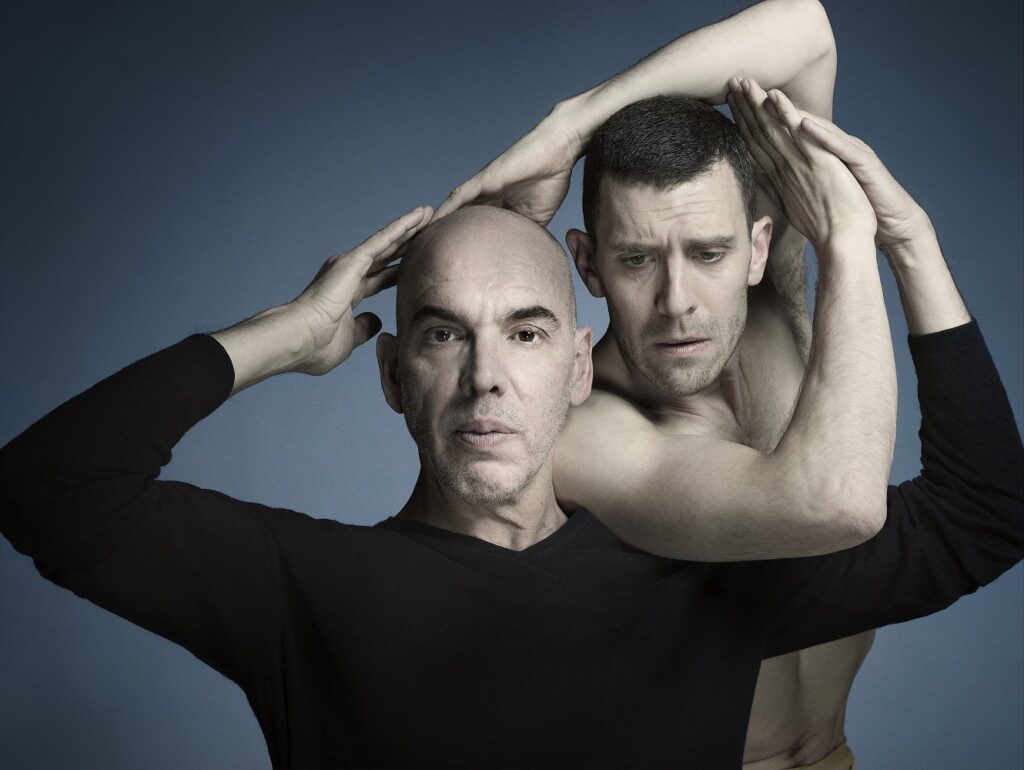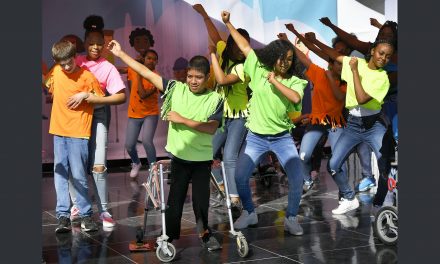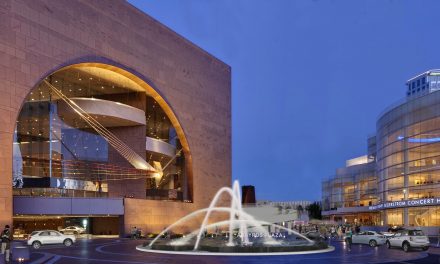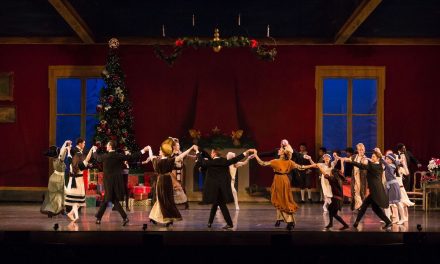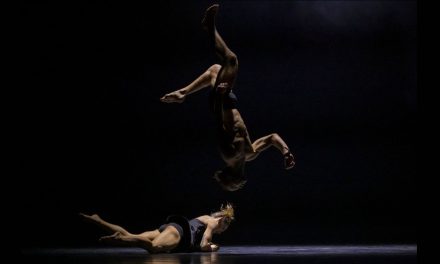Lead by Executive/Artistic Director, Kelly Hargraves, the 22nd edition of Dance Camera West’s International Dance Film Festival takes place Thursday, January 25 through Sunday, January 28, 2024 at Barnsdall Art Park’s historic Gallery Theatre located atop the scenic Hollywood hilltop. For 2024, Dance Camera West (DCW) “showcases a curated selection of 40 films from 20 countries, each making its World, U.S., or Los Angeles premiere.” These films shown were chosen from over 320 submissions chosen by a panel of renowned filmmakers. In addition to the films in competition screenings, the 2024 edition experience will be enhanced by workshops with filmmakers, artist talks, and social receptions. Single tickets are $15 and full festival passes are $150 which include all screenings, receptions, and workshops. Tickets are on sale now HERE.
The internationally recognized artists who are highlighted at the festival include Merce Cunningham, William Forsythe, Paris Opera Ballet, Pilobolus, Marie Chounard, Akram Kahn, Jiri Kylian/Netherlands Dance Theatre, Lloyd Newson/DV8, Anne Teresa de Keersmaeker with Thierry de Mey, Wim Vandekeybus/UltimaVez, Meg Stuart, Edouard Lock/La La Human Steps, and Bill T. Jones, amongst many others.
One such renowned artist who will be the Honored Guest at DCW’s International Dance Film Festival is Spanish Director, Choreographer and designer, Javier De Frutos, who was named one of 2016 most influential people in Dance in the UK by the London Evening Standard. Among his many accolades, Frutos has been awarded the Olivier Award for Best Theatre Choreography for Cabaret, The Evening Standard Award for The Most Incredible Thing in collaboration with Pet Shop Boys, Critics’ Circle Awards for Milagros with Royal New Zealand Ballet and Elsa Canasta with Rambert and Scottish Ballet, The South Bank Show Award for Grass and The Time Out Award for Sour Milk with Candoco Dance Company (disabled London based).
De Frutos graciously agreed to an interview and while introducing one another, I discovered that he was a longtime admirer of Viola Farber, with whom I had danced with for over 15 years. He had heard about her while living in Venezuela where he was born and decided to search her out. De Frutos first traveled to Paris, then to Angers where Farber had been for three years but had just left. He finally connected with her in London and even worked with Farber in New York as well as dancing with Laura Dean.
An important thing regarding Farber that De Frutos said was “She influenced my way of thinking, yet she didn’t influence the style of my work. When you find somebody that is so complete or untouchable, you just don’t want to imitate, but to be inspired as a person.”
As previously stated, De Frutos has won many awards for choreography. I asked him when he became interested in making dance films.
“All at the same time,” he said. “I became interested in choreography, which is the first thing that is always your influences somehow.” He went on to explain how originally, he primarily wanted to do theater. “I believed in theater. I believe in the telling of the story; whatever the story is.”
At the age of 16, De Frutos traveled to New York and while there on the recommendation of a friend, went to see the play Cloud Nine, written by Caryl Churchill and directed by dancer Tommy Tune, at the Lucille Hotel in the village. “I ended up watching, reading his bio and going, but he’s known for being a choreographer,” De Frutos said. “What I have seen from the staging, tells me that there is something incredibly fluid that I cannot touch.”
After this experience, De Frutos decided that he needed to learn to dance because he wanted to have all the tools, then he could decide about what he wanted to do with his art. With an interest in the Visual Arts, De Frutos had studied architecture and photography in Venezuela and did whatever he could to document his work. During this time, he decided that his work looked good on camera.
“It seemed to be photogenic,” he said. “…and also, I knew that there were parts of information that I felt that I could not satisfy completely on the live stage work, that I could find the answers on film.”
De Frutos began working as a choreographer for commercials, visual art installations and feature films. After experimenting with these, he got hooked. “Into that I was going to be balancing between stage and whatever I could do in theater, the visual arts, and cinema. What I came to terms with a few years ago just before COVID, but then COVID really reaffirmed it is that I would if I were lucky enough to be offered or to find a project, at least I had the possibilities of choosing what medium was best to tell the story. It wasn’t choosing or not choosing, but it so happens as well that with the arrival of COVID, I had a lot of time to think, and I was weirdly playing movies in my head.”
The three films, Whoever You Are (2021), Burning Building (2021), and The Sequestered Disc (2023), that are being shown at DCW’s International Dance Film Festival came out of this period of time; a result of wanting to do projects during the pandemic. “I wasn’t concerned about what COVID would do to us but I was concerned about this finality, of not leaving a legacy.” He added. “I felt if I’m thinking and I’m feeling something very particular at this stage in my life, I wanted to be somehow documented and as an artist, I felt film seems to be now.”
I found his film Whoever You Are very haunting, like the two people in it were but echoes of the house’s memory. Because I wanted to leave its meaning up to the viewers, I asked De Frutos not to explain what the film was about but to talk about why he chose that type of house.
“I love the idea of a kind of demystifying moment because there’s some kind of practicality about making work,” he said. “I’m a craft freak. I love, love, love craft. I love creating. I love knowing how to create it and recreate it and that [is] the part of creating work on stage that I’m bringing to film.” De Frutos said that his latest motto is “Structure will set you free.”
He related how there was something about his film Whoever You Are that he did not realize when he was thinking about creating it. The house was found while looking for a location to make the film and De Frutos admitted that during that period he had been watching a lot of Rebecca during the pandemic. The film Rebecca was a 1940 American romantic psychological thriller film directed by Alfred Hitchcock. De Frutos is also a big fan of Orson Wells’ movie The Magnificent Andersons. He was not trying to make a film in that aesthetic, but only realized that it was happening while he was creating the film; filming it in black and white and using a very distinctive choice of sound. “They are very hermetic and hollow,” he said. “The sound is not live, and it almost feels like it has no oxygen.”
The film features two dancers and the reading of the poem Whoever You Are Holding Me Now in Hand by Walt Whitman. De Frutos purposefully had it read in English by an actor friend of his.
“There was something about tapping on the relationship between those two performers, the location, and the ambiguity of the Walt Whitman poem,” he added. “…which is not ambiguous at all, but to the naked eye seems to be. There was something about the intimacy of the cinematography and the verbatim of the word. It was all those things together. It was only when I finished it and went into the editing room that it hit me, and I realized that that’s the state of mind that I’m in.” He went on to speak about how the subliminal and the subconscious work very strongly in this kind of work. “When you’re not searching for the narrative, but the narrative finds you.”
De Frutos said the film to follow, The Sequestered Disc, was in some way a comment on the film Whoever You Are.
During the interview we discovered that we had another thing in common, the love of the writing of Tennessee Williams. De Frutos told me that for Whoever You Are he originally wanted to use Williams’ poem about his lover Frank Merlo, Little Whores, in his film Whoever You Are, but that obtaining the rights was extremely expensive.
“There was something about the codependency of the last two films that had been on the original thought of doing it about Little Whores and not Walt Whitman,” he said. “…and funny enough, The Burning Building, which is also inspired by a quote by Tennessee Williams. The film is loosely based on a play called Out Cry that he (Williams) wrote late in his life about a brother and sister who get trapped in a theater.”
It was a book by Tennessee Williams that he read as a young man that made De Frutos want to learn English. The book belonged to his father and had been translated into Spanish. He somehow thought that the translation was not enough to capture the reality of Williams’ book, so he decided to study English.
When asked which filmmakers most inspired him, he said that he does not have an alpha personality, but when on set, has to act like one. “I always try to navigate towards those filmmakers that somehow found a way through,” he answered. He mentioned Jerome Robbin’s West Side Story and how one can talk about Robert Weiss’s contribution but that we know that it is Jerome Robbin’s film from beginning to end. He went on to say that two of his most favorite films are not dance films but were directed by Bob Fosse.
“They are Lenny and Star 80,” explained. “I actually think that these are his two best films, because somehow the structure of the choreographer never leaves. I go to the classics and I go to Orson Wells. And controversially I sit down every time that I see an Elia Kazan I think, damn it, how did you do that? How did you manage something that is so artificial for it to be so logical and organic?”
Although De Frutos is a film buff, said that he always returns to the classics. “When I decided that I wanted to play around with the idea of a more formal, a more structured, and a slightly less amorphous form of dance for the camera, I felt that I was slightly on my own.” It was when Kelly Hargraves said that she could not quite put her finger on why his films were so different from the other offerings in the festival, that he stopped questioning himself.
While he is at the film festival in LA, De Frutos will be teaching a course called “Choreographing your storyboard.” I asked him to explain what that meant.
“There is a relationship that has to be established that the choreographer always needs to understand what the frame is and something about distances and what is the volume of your content,” He explained. “One of the things I always say in class, and actually to myself, is if you don’t have a written script to speak of, your choreography is your script, and you have to treat it with the same level of respect as you do with the written script on pages. So for the choreographer to understand that the most precious commodity and the richest of your commodity on a film is your content and that your content is your script, then therefore you have to analyze it.”
Once a young choreographer who is making a dance for the camera has broken their script down to where it is directable and then break it down so that their choreography is their script, then they can look at it subjectively. Next the choreographer/filmmaker gives it coloring and framing so that they can talk to their dancers like they are actors, and they find a mutual starting place of respect.
“So, I’m not apologizing for doing a dance for the camera,” De Frutos said. “I’m working with a script that only I can read, and therefore I have that power.”
He mentions obvious things that must be considered, such as to be responsible to the dance, as both a dance maker, as a self-producer, and as a filmmaker to be on time and budget. With all three of the above-mentioned films, but particularly with The Sequestered Disc, De Frutos had a verbatim script that worked consecutively with the dance script. This way, he was able to relate to his technical crew that he had broken down the script into 72 shots in order to tell his story. Not 71 or 74, but 72 shots.
“If I have less,” De Frutos explained. “I will have pages missing. So, you’re able somehow to break your dance script, your choreography into a series of loosely made shots.” He went on to say that this could be done on one’s phone or with one’s scribbling as long as you can find your way of notating the work.
With The Burning Building De Frutos had made his entire script on his camera before he met with his crew. Because of the pandemic, everything was first done on Zoom and he first saw the faces of his dancers on the day of filming, after everyone had been tested for COVID and he knew that he had 58 takes to complete the story and the day before shooting, De Frutos was told that he only had six hours to work in the venue.
“The beauty of working with dancers who can actually interpret, is that we can get shit done and getting shit done in one take,” he added. “So there was something about not letting inspiration or the muses distract me. I need to get my artistic head before I start shooting.” The time restriction forced De Frutos to be economical and then when he was in the editing room, he could again become the artist. “In the editing room the storyboarding is pretty much about making sure that the choreographer, filmmaker, producer, and hopefully the editor will have complete control of the material and doesn’t feel that he, she, or they have compromised. “It’s a matter of trying to figure out a more pragmatic way of filming without sacrificing your artistic integrity,” he said. De Frutos added that it had taken him years to achieve this.
An analogy that De Frutos used regarding getting everything done on time and within the budget was “I try to make the wedding dinner rehearsal as important as the wedding itself!”
De Frutos’ Choreography for the Storyboard workshop will be taught in both Spanish and English because it is sponsored by the Institute of Cervantes of Los Angeles and translating from one language to the next sounds like it is straightforward, but it is not. “Because the way that you motivate in different languages, the cultural differences of what our influences are, when I have taught in Latin America and Spanish, and I talk about films, my references are very different. I have to keep changing and shifting,” he said. “I am very interested in teaching bi-lingually and to see how people respond.”
Javier De Frutos and I talked for almost an hour and discussed a myriad of topics and want to thank him for one of the most interesting interviews thus far.
“Kelly (Hargraves) has been a great guide. Every time I come to LA she will always have a plan of where to go, what to see,” He added at the end of our interview. “Something about understanding that the balance of the film industry and in LA, both visual arts and dance, is really rich, and somehow I will prefer coming to LA way more than going to New York.”
We look forward to seeing him and his films!
To learn more about Javier De Frutos, please visit his website.
To learn more about Dance Camera West and to purchase tickets to the International Dance Film Festival, please visit their website.
Written by Jeff Slayton for LA Dance Chronicle.
Featured image: Screenshot from film Burning Building by Javier De Frutos – Courtesy of DCW.

